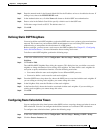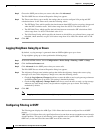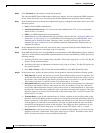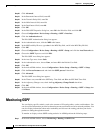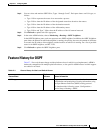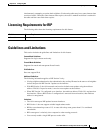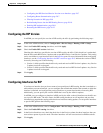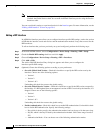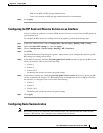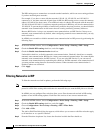
CHAPTER
28-1
Cisco ASA 5500 Series Configuration Guide using ASDM
28
Configuring RIP
This chapter describes how to configure the ASA to route data, perform authentication, and redistribute
routing information using the Routing Information Protocol (RIP).
This chapter includes the following sections:
• Information About RIP, page 28-1
• Licensing Requirements for RIP, page 28-3
• Guidelines and Limitations, page 28-3
• Configuring RIP, page 28-4
• Customizing RIP, page 28-4
• Monitoring RIP, page 28-12
• Configuration Example for RIP, page 28-12
• Feature History for RIP, page 28-13
Information About RIP
This section includes the following topics:
• Routing Update Process, page 28-2
• RIP Routing Metric, page 28-2
• RIP Stability Features, page 28-2
• RIP Timers, page 28-2
The Routing Information Protocol, or RIP, as it is more commonly called, is one of the most enduring
of all routing protocols. RIP has four basic components: routing update process, RIP routing metrics,
routing stability, and routing timers. Devices that support RIP send routing-update messages at regular
intervals and when the network topology changes. These RIP packets include information about the
networks that the devices can reach, as well as the number of routers or gateways that a packet must
travel through to reach the destination address. RIP generates more traffic than OSPF, but is easier to
configure.
RIP is a distance-vector routing protocol that uses hop count as the metric for path selection. When RIP
is enabled on an interface, the interface exchanges RIP broadcasts with neighboring devices to
dynamically learn about and advertise routes.



